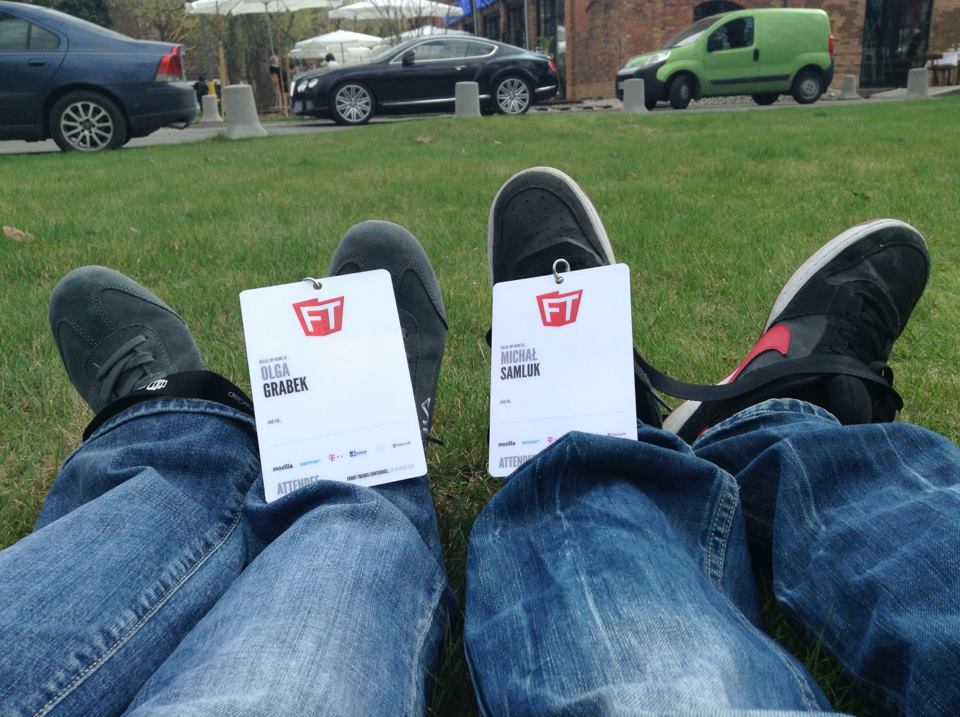Enumerator is related to iterators. The significant difference between the two is that Enumerator is an object and iterator is a method. Basically, Enumerator is a simple enumerable object with each method. It uses Enumerable module to define such methods like: take, drop, map, select etc. directly on top of its each method. The most interesting thing is how each method of Enumerator is defined. Enumerator doesn’t have built-in each method. Every time you create Enumerator, you have to specify this method. After you’ve did it, Enumerator knows how to use other enumerable methods (map, reduce etc.)
You can define each method algorithm in one of two ways:
- call Enumerator.new with code block, which contains the each logic
- attach enumerator to other object
Enumerator.new with code block
Lets’ see how we can create Enumerator calling new method on it. This is a simple example:
e = Enumerator.new do |y|
y << 'a'
y << 'b'
y << 'c'
y << 'd'
endy is an instance of Enumerator::Yielder, which is automatically passed to the block. In the block we teach yielder what should happens when an each is called. Let’s try to call some enumerable methods on our enumerator in irb console:
e.to_a
#=> ["a", "b", "c", "d"]
e.take(2)
#=> ["a", "b"]
e.map(&:upcase)
#=> ["A", "B", "C", "D"]As you can see each method works as expected. You can provide to Enumerator block any logic you like. For example, if you want to work on the whole alphabet, you can pass something like this:
e = Enumerator.new do |y|
('a'..'z').each { |letter| y << letter }
endI even found so crazy and useless example:
a = [1,2,3,4,5,6]
e = Enumerator.new do |y|
sum = 0
until a.empty?
sum += a.pop
y << sum
end
end
e.take(3) #=> [6, 11, 15]
a #=> [1, 2, 3]
e.map { |n| n*2 } #=> [6, 10, 12]
a #=> []Attach enumerator to other object
The second method to work with enumerators is more common. What you have to do here, is hooking up the enumerator to another object iterator (the most often to the each method but it can be any method that yields values). This will give the enumerator the basic knowledge what to do when each logic is called. To use this approach we call enum_for on the object from which we want to borrow iteration logic. As a first argument, we pass the name of the method onto which the enumerator will attach its each method. Let’s see the example:
a = [1,2,3,4]
e = a.enum_for(:select)
e.each { |n| n > 2 }When we run this code in irb console, we get [3,4]. Here we use select method as a foundation of enumerator each method. After defined that, we can pass to each method block the condition we normally use for select method and it works :)
We can also pass additional arguments to enum_for method. Example:
a = [1,2,3,4,5]
e = a.enum_for(:inject, 'Countdown:')
e.each { |string, n| string + " #{n}..." }
#=> "Countdown: 5... 4... 3... 2... 1..."Enumerator uses
Protecting objects with enumerators
One situation when enumerators can be useful is when you’d like to protect object from changes. Let’s say that you have an method that takes an array as an argument:
def some_method(arr)
#some code here
endThen the method can change the passed object:
def some_method(arr)
arr.pop
end
array = [1,2,3,4]
some_method(array)
puts array # [1,2,3]What can you do if you’d like to protect array argument form being changed? Yes! You can use Enumerator for this:
array = [1,2,3,4]
some_method(Enumerator.new(array))
puts array # undefined method `pop' for #<Enumerator: [1, 2, 3, 4]:each> (NoMethodError)Enumerator can remember state
Enumerator is an object, so it remembers its state. It allows us to do something along these lines:
arr = %w{Paris London Rome}
e = arr.to_enum
puts e.next # Paris
puts e.next # London
puts e.next # Rome
puts e.rewind # returns to the beginning
puts e.next # ParisAdd enumerability to object
Enumerator can add enumerability to objects that don’t have it but they possess an iterator method. Let’s say we have a class:
module MyModule
class Car
BRAND = %w{ BMW Ford Toyota Ferrari }
def wiki
BRAND.each { |brand| yield(brand) }
end
end
end
cars = MyModule::Car.new
puts cars.map(&:upcase) # it won't work: undefined method `map' for #<MyModule::Car:0x007fc819886628>Our class doesn’t mixin Enumerable module, so it can use such method as map. So what can we do? The easiest solution is mixin Enumerable module, of course. But we can also use Enumerator:
e = cars.to_enum(:wiki)
puts e.map(&:upcase)mapwithindex – here you are!
Enumerable module has a very handy method – eachwithindex:
brands = %w{ BMW Ford Toyota Ferrari }
brands.each_with_index do |brand, index|
puts "Brand #{index+1}: #{brand}"
endIt will be good to have similar method, that passes index as an argument but with ability of map method. There is no mapwithindex method but Enumerator class has with_index method which we can use instead:
brands.map.with_index { |brand, index| [brand, index] }
# [["BMW", 0], ["Ford", 1], ["Toyota", 2], ["Ferrari", 3]]How it works? If we call an enumerable method without block, it returns Enumerable object. When we get one, we can use it to call with_index method.
As you can see, there are a lot of situations, when Enumerator can be really useful. For further reading about Enumerator and Enumerable module, I recommend article “Building Enumerable & Enumerator in Ruby”.



